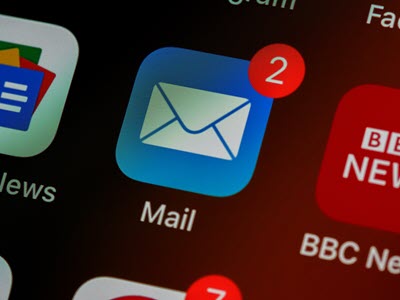A new report: “What’s Working in Email Marketing: The Power of Aligning Strategies, Data & Content” details the strategies, technologies, and best practices that today’s email marketers are adopting in an era of data privacy, remote work, and demanding, digitally-savvy buyers.
I was asked by the team at Demand Gen Report to contribute my views, and those thoughts are republished below. You can download the complete report (registration required) here.
What are the most effective strategies for email marketing campaigns, such as subscriber segmentation and personalization?
Personalization is over-rated. Few companies have 100% clean data or anywhere close to it, so any attempt at personalization is likely to be rife with errors. Even a salutation (“Dear [First Name]”) is largely a waste of space and simply pushes more valuable selling copy down the page.
Marketers are better off segmenting messages and campaigns by 2-3 key personas. Email communication doesn’t have to be 1:1 to be successful, but the more relevant your message, and the more you can connect with the pain points specific to a particular role, the better.
Why is it important to optimize email displays across all devices and what is the best way to accomplish that goal?
It wasn’t long ago that we were preaching email to be “mobile-friendly.” Then it was “mobile-first.” Now, all B2B email should be optimized for mobile pretty exclusively. A recent (August 2022) statistic said that 81% of all emails are read on mobile devices, and that number will only increase. It doesn’t make sense to accommodate other devices (desktop, laptop, tablet) if it forces any kind of compromise in how someone reads and engages with that email on their phone.
How can organizations refine and enhance their databases while adhering to the seemingly ever-changing privacy landscape;
One of the implications that we’re seeing due to data privacy laws (and the hurdles they present for email marketers) is a growing reliance on other channels – in particular, social media. Having a customer or user or prospect follow you or your company on LinkedIn, for example, and the ongoing communication and brand awareness that permits, can be just as effective as opt-in email. Plus, you don’t have to worry about bad data when someone changes jobs.
What content strategies are successful B2B companies leveraging to create standout campaigns that promote further brand interaction?
More than ever, marketers need to think of themselves as publishers. Buyers want information of value that isn’t just a list of reasons to buy your product. One strategy proving highly effective is use of industry studies, perhaps co-authored with a research or analyst firm, about a topic or business challenge that speaks to the pain your solution solves.
A second is leveraging user data in the aggregate to provide potential customers useful industry benchmarks. A classic example is the security company that publishes a quarterly “threat report” summarizing the biggest IT security risks their solution has identified in the last three months. Publish these studies and reports on a regular cadence, and a company becomes not just a thought leader but an industry authority, one that can build an engaged, opted-in community of potential customers.
For more thoughts on how to get more from your email campaigns, watch our recorded Webinar: “A Crash Course in B2B Email Creative.”
Photo by Brett Jordan on Unsplash




